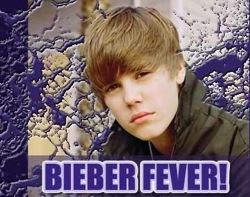We’re happy to share another powerful interview in our “Influencers Who Inspire” series. Today’s interview is with Alicia Eler, Reporter at ReadWriteWeb. We have always admired Alicia for her in-depth coverage of culture, tech and social media topics - things we are very passionate about here at PerkettPR. Her admiration of technology and its impact on our culture is extremely interesting, as is her experience in moving from the print publishing world to online. She also shares some great tips for PR folks in regards to “courting” journalists.
Alicia is curently a ReadWriteWeb Reporter. Before joining ReadWriteWeb, she was the Associate Editor of MoveOn.org, the Web Editor of Sylvia cartoonist Nicole Hollander’s BadGirlChats.com, and the Arts & Entertainment Community Manager for the Chicago Tribune’s ChicagoNow.com. Her arts writing has been published in Artforum.com, Art Papers, Time Out Chicago, and the Chicago Tribune, among others. She can be reached at @aliciaeler and [email protected]. See her full portfolio here: http://www.aliciaeler.com
You used to cover arts and entertainment before RRW - do you look for topics that have an art or entertainment-based angle, even in the tech world?
Yes, I always look for an art and/or culture angle. I am interested in entertainment (movies, music, TV) if I can look at a larger cultural trend within. So, for example, I am fascinated by pop culture and the way Justin Bieber has become a celebrity both on social media sites (Instagram, Facebook) but also on a larger, mass media scale.
When it comes to technology, I am interested in looking at the ways it shapes culture and vice versa. We can’t think about Facebook or Twitter without thinking about celebrity; we can’t discuss communication without talking about iPhones and emoji icons. Like a cultural anthropologist, I work best when I immerse myself in the culture and space that I am trying to understand and tease apart.
I am also an excessive user of both mobile and social - I have more apps on my phone than I care to admit. I am fascinated by the culture of “free” - the fact that if we use a platform for free, we are the products. We pay for it with our information, the data that we so willingly provide. I investigate the push and pull between sharing and consuming, particularly as it relates to our increasingly networked culture. What does it mean to live a life on social networks in addition to a physical, offline reality?
How has journalism changed over your tenure in the industry? Or has it?
I started off in the print world. Back then, the idea of publishing an article online seemed both novel and silly. I got paid for what ran in print publications. That was back in 2006. Now, six years later, I write almost exclusively for the Web. As I mentioned above, I prefer to act as a cultural anthropologist working in the realm of social media.
I still write about art that happens offline when I have the time to do so - I cannot give myself emotionally to technology. It is cold, glass, wires and electricity. When I spend too much time online, I start to feel at a loss for meaningful offline relationships.
This is why I prefer to think about social media in a detached way. I see social networking sites as an experiment, not a space where I clone myself and act as me. I am “me” on Facebook.
So, as I was saying, I do write almost exclusively for the Web - but one exception is an essay I am writing about Chicago-based artist Ellen Greene. She came to me through Peregrine Honig, an artist I have worked with over the past five years. Ellen paints raw, intricate vintage tattoo imagery on women’s hand gloves. In her work, she juxtaposes the realms of nature and culture, exploring ideas of motherhood, what it means to be a “hero,” and investigates the possibilities of personal myth making. I have been moved to tears by her work. It is what I think about when I’m not immersed in social networks. I am also fascinated by the work of Danah Boyd, who studies teen tech trends, race and class.
How do you like to be contacted? What makes a great pitch?
I prefer to be contacted either by people I know, people with whom I have mutual friends, or through some sort of smart, witty email or tweet.
I really appreciate formalities and the idea of “courting” a writer - too often I get a bunch of garbage-type press releases. I feel like people think that if they can put together a press release and blast it out to folks they know, they will get coverage. That is not true. I generally ignore or filter out press releases, especially if they are not at all personalized.
My advice to PR people is take your time, do your research and intuit when the best time to approach a writer is. I am someone who remembers everything - so when I meet someone I don’t like, I remember it as much as someone I do like.
When it comes down to it, I am fascinated by people who truly believe that their product/idea/brand is the best thing ever. I like a good salesperson as much as the next guy.
What are PR people NOT doing that they should be? What are they doing that they SHOULDN’T?
Like I said above, PR people should be doing their homework and not sending spammy press releases. Court the writer! Also please do not tell me your sad story about why you need to be covered - there is nothing more unattractive than someone who is desperate.
What do you read for journalistic/industry knowledge and inspiration?
I read Techmeme, my Facebook news feed, Twitter, Tumblr like RappersDoingNormalShit & LesbiansWhoLookLikeJustinBieber, the stuff people post on my Facebook wall. (My Facebook community is awesome!) I love Atlantic Wired, Wired magazine, Buzzfeed, Wall Street Journal Tech, New York Times’ Bits Blog, and my colleagues’ work at ReadWriteWeb. Sometimes I try not to read that much - it’s easy to get caught up in trends and what everyone else is saying. I like to meditate, too.
Do you have any secret ambitions or hobbies?
I collect owl ornaments and figurines. I believe in intuition, serendipity and kismet. In fact, Kismet is my middle name. No, seriously.
What is next for you in 2012?
Becoming ever more immersed in the social networked world, coining new terms that will define this era, meeting lots of artists and creative thinkers/visionaries, travel, hanging out with Mark Zuckerberg. (Hi Mark!)


 Unless you’re living under a rock, you’ve likely heard of Justin Bieber, the latest singing sensation that has teens and preteens around the world screaming and sobbing just for a quick, but memorable, glimpse of his dashing smile and famous hair. Last Sunday afternoon, I took my seven (going on 17)-year old daughter to see the new Justin Bieber movie “Never Say Never,” which came in second place at the box office. As I sat there watching this surprisingly inspiring movie, I noticed my little girl get a twinkle in her eye and I began to understand the intriguing phenomenon known as “Bieber Fever.”
Unless you’re living under a rock, you’ve likely heard of Justin Bieber, the latest singing sensation that has teens and preteens around the world screaming and sobbing just for a quick, but memorable, glimpse of his dashing smile and famous hair. Last Sunday afternoon, I took my seven (going on 17)-year old daughter to see the new Justin Bieber movie “Never Say Never,” which came in second place at the box office. As I sat there watching this surprisingly inspiring movie, I noticed my little girl get a twinkle in her eye and I began to understand the intriguing phenomenon known as “Bieber Fever.”